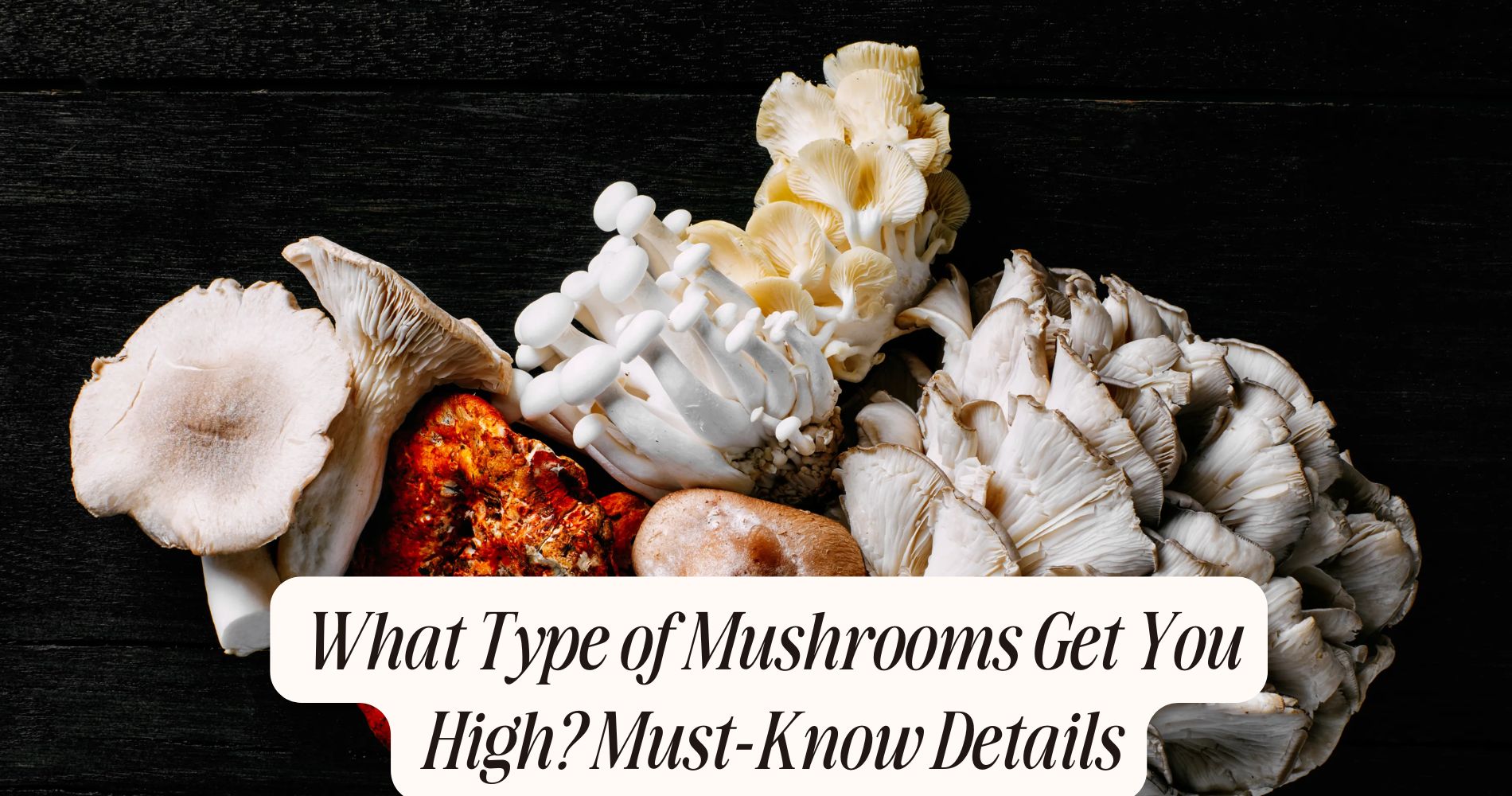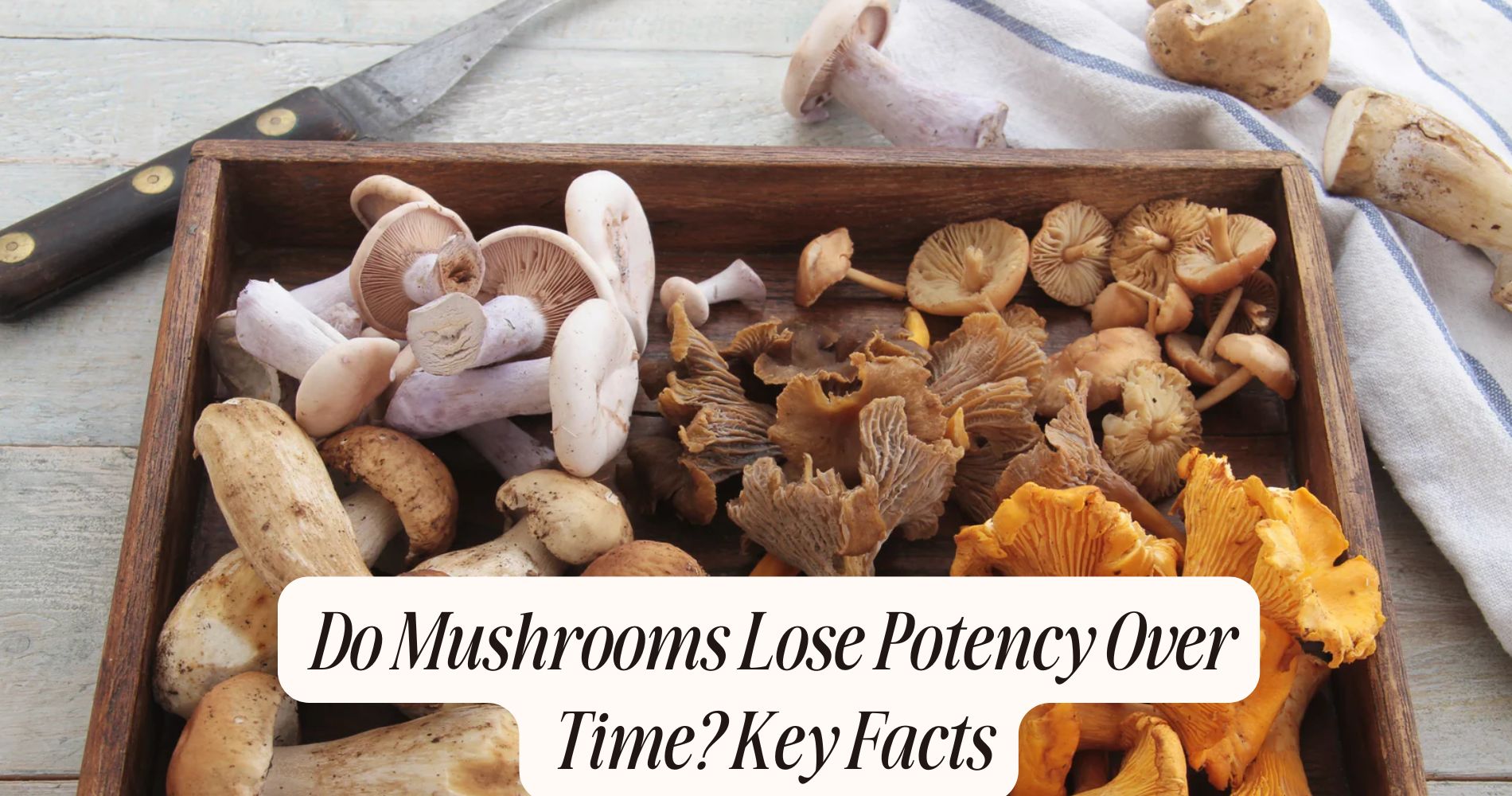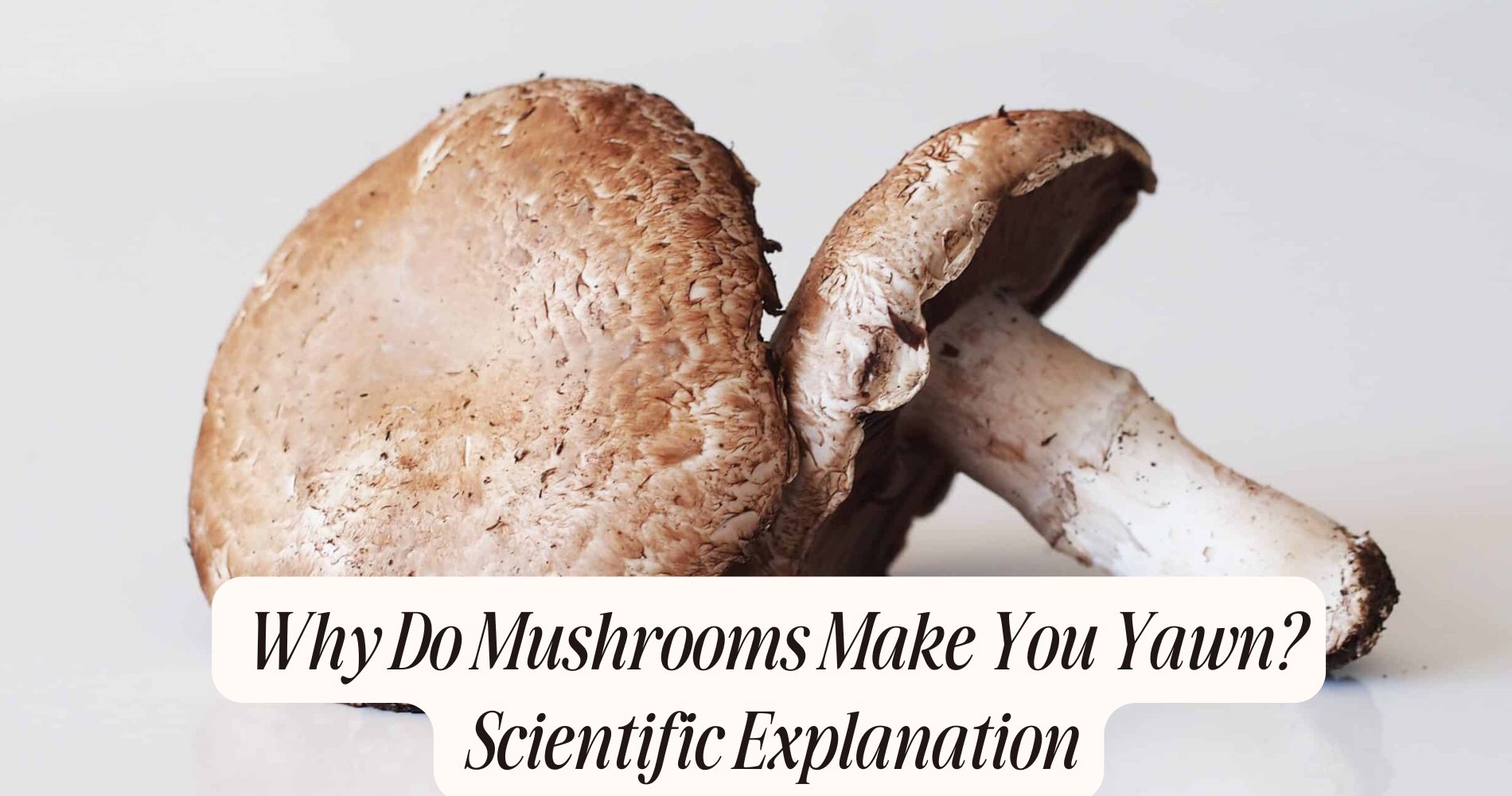
What Type of Mushrooms Get You High? Must-Know Details
Overview of Psychedelic Mushrooms
Psychedelic mushrooms, often referred to as magic mushrooms, contain compounds like psilocybin and psilocin that can induce altered states of consciousness.
You might find it intriguing that these mushrooms have a rich history, used for centuries by various cultures for spiritual and healing purposes. Ancient civilizations in Mesoamerica, for instance, engaged in mushroom rituals, believing these fungi connected them to the divine.
If you're interested in mushroom cultivation, you should know that growing these mushrooms has become increasingly popular among enthusiasts. This process involves creating a suitable environment for the fungi to thrive, often using substrates like straw or wood chips.
Many people find satisfaction in nurturing their own psychedelic mushrooms, leading to a deeper understanding of their effects and potential benefits.
While exploring their historical usage and cultivation techniques, keep in mind the legal considerations surrounding psychedelic mushrooms in your area.
Understanding both the cultural significance and the practicalities of mushroom cultivation can enhance your experience and appreciation of these intriguing fungi.
As you explore deeper into the world of magic mushrooms, you'll uncover layers of information that make them truly enchanting.
Common Types of Psychedelic Mushrooms
Now that you understand the basics, let's explore some common types of psychedelic mushrooms.
You'll find that Psilocybe cubensis is one of the most popular varieties, but there are other notable species worth knowing about too.
Understanding their effects and experiences can help you make informed choices.
Psilocybe Cubensis Overview
Often celebrated for their potent effects, Psilocybe cubensis is one of the most popular species of psychedelic mushrooms. Known for its relatively high psilocybin content, this mushroom offers a profound psychedelic experience, often leading to vivid visual hallucinations and deep introspection. Many enthusiasts appreciate its accessibility and ease of cultivation, which makes it a common choice for both beginners and seasoned psyconauts.
When it comes to cultivation techniques, P. cubensis is favored for its robustness and adaptability. It thrives in various substrates, including grain and compost, allowing you to experiment with different growing methods. With proper care, you can achieve impressive yields, making it a rewarding venture.
However, it's crucial to be aware of the legal implications surrounding P. cubensis. In many regions, these mushrooms are classified as controlled substances, which can result in severe penalties if you're caught possessing or cultivating them.
Always check local laws to guarantee you remain compliant, as regulations can vary considerably from one place to another. By staying informed, you can safely explore the fascinating world of Psilocybe cubensis.
Other Notable Species
While Psilocybe cubensis may be the most well-known, several other notable species of psychedelic mushrooms offer unique experiences and effects.
For instance, Psilocybe semilanceata, commonly known as the Liberty Cap, is a small, potent mushroom that thrives in grassy fields. Its high psilocybin content can lead to intense visual and auditory perceptions, making it a favorite among seasoned users.
Another exotic mushroom type is Psilocybe azurescens, often referred to as the "Flying Saucer" mushroom. This species is native to the Pacific Northwest and boasts one of the highest concentrations of psilocybin. If you're looking for a robust experience, this might be the one for you.

Don't overlook magic truffle varieties, either. These underground fungi, like Psilocybe tampanensis and Psilocybe mexicana, are known for their powerful effects and are often easier to find than their mushroom counterparts.
They provide a milder but still profound experience, making them a popular choice for beginners. Exploring these species can broaden your understanding of psychedelic mushrooms and help you find the right fit for your journey.
Effects and Experiences
Diving into the effects and experiences of common types of psychedelic mushrooms reveals a fascinating range of sensations and insights. When you consume these mushrooms, you'll likely encounter heightened sensory experiences. Colors may seem more vibrant, sounds can become richer, and tactile sensations might feel amplified.
This altered perception is a hallmark of mushroom psychology, as your mind shifts to explore thoughts and feelings with a new lens.
Magic mushrooms, particularly those containing psilocybin, can induce profound introspection. You might find yourself diving deep into your psyche, unraveling emotions or memories that you hadn't fully processed before. Some users report feelings of interconnectedness with nature and the universe, leading to an expanded sense of self.
However, the experience can vary markedly based on the type of mushroom, dosage, and your mental state. While some might encounter bliss and euphoria, others could face anxiety or paranoia.
It's essential to approach these experiences with respect and caution, ensuring a safe and supportive environment. Ultimately, understanding the effects of these mushrooms can guide you toward a meaningful journey through your mind.
Effects of Psilocybin Mushrooms
Psilocybin mushrooms, commonly known as magic mushrooms, can profoundly alter your perception and emotional state. When you consume these mushrooms, you might experience intense psychological effects that vary from person to person. Many report feelings of euphoria, heightened creativity, and deep introspection. You may find yourself reflecting on past experiences or contemplating life's bigger questions, often leading to significant personal insights.
Alongside these psychological effects, sensory alterations are common. Colors may seem brighter, sounds can become more pronounced, and you might notice textures in a way you never have before. Your sense of time could feel distorted, making minutes seem like hours, or vice versa. You might also experience visual distortions, such as patterns or trails following objects as they move.
These effects can create an immersive experience, allowing you to connect with your surroundings on a deeper level. However, the intensity of these experiences can vary based on factors like dosage, your mood, and environment.
Understanding these effects can help you prepare for what to expect when exploring psilocybin mushrooms.
Safety and Risks Involved
Engaging with psilocybin mushrooms carries inherent safety considerations and potential risks that you should be aware of. First and foremost, conducting a thorough risk assessment is essential before consuming these mushrooms. Individual reactions can vary considerably; while some may experience profound insights and joy, others might face anxiety, paranoia, or even panic attacks.
Mushroom safety involves not just the psychological effects but also the physical risks. It's critical to verify you're consuming the correct species, as some mushrooms can be toxic or deadly. Misidentifying mushrooms is a common mistake, and it can have serious consequences.

Additionally, consider your mental health history. If you have a predisposition to mental health issues, such as schizophrenia or bipolar disorder, psilocybin could exacerbate these conditions.
Always set and setting play a considerable role in your experience. Being in a comfortable, safe environment with trusted friends can help mitigate risks.
Lastly, be mindful of dosage. Starting low and gradually increasing can help you gauge your tolerance while prioritizing your safety. By being informed and cautious, you can navigate the world of psilocybin mushrooms more responsibly.
Legal Status by Region
Understanding the safety and risks of psilocybin mushrooms also leads to the important topic of their legal status, which varies considerably around the world.
It's essential to be aware of the legal considerations in your region before experimenting with these mushrooms. In some places, like the Netherlands and Jamaica, psilocybin mushrooms are legal and sold openly.
However, countries such as the United States and Canada have strict regulations, with psilocybin classified as a Schedule I substance in many states.
In the U.S., a few cities like Denver and Oakland have decriminalized psilocybin, but federal law still prohibits it.
Canada has seen a shift, allowing limited use of psilocybin for therapeutic purposes, yet recreational use remains illegal.
In Australia, psilocybin mushrooms are illegal, but there's growing interest in exploring their therapeutic benefits.
As you navigate these regional differences, always stay informed about local laws and regulations. Engaging with psilocybin mushrooms without understanding their legal status can lead to unintended consequences.
How to Identify Psychedelic Mushrooms
Identifying psychedelic mushrooms can be tricky, but knowing the key features makes it easier.
You'll want to familiarize yourself with common species, as each has unique characteristics.
Let's explore what to look for to guarantee you're spotting the right ones.
Key Identification Features
When you're out in nature, knowing how to identify psychedelic mushrooms can be vital for your safety and experience. Start by examining the cap shape and color; many psychedelic varieties have a conical or bell-shaped cap that can range from brown to gold.
Pay attention to the gills underneath—are they free from the stem or attached? This can be a significant identifying feature.
Next, look at the spore color. Spore prints can reveal a lot; the most common colors for psychedelic mushrooms are purple-brown to black. To make a spore print, place the cap gill-side down on a piece of paper for several hours.
Also, consider the habitat preferences. Psychedelic mushrooms often thrive in damp, wooded areas, particularly near decaying wood or in grassy fields.
Keep an eye out for specific types of vegetation, as certain mushrooms prefer specific plants or trees.
Lastly, remember to take your time and be observant. Misidentifying mushrooms can lead to dangerous consequences, so always double-check your findings against reliable sources before consuming anything.
Common Species Overview
Psychedelic mushrooms are a fascinating part of the natural world, and knowing the most common species can enhance your foraging experience. Two of the most well-known types are Psilocybe cubensis and Psilocybe semilanceata.
Psilocybe cubensis usually grows in tropical and subtropical habitats, often found in cow dung or rich soil, while Psilocybe semilanceata thrives in grassy fields, particularly in temperate regions.
To identify these mushrooms, use effective identification techniques such as examining their size, color, and spore print. Cubensis typically has a golden-brown cap with a thick stem, while semilanceata features a more slender, conical cap that can appear a bit wavy.
Pay attention to the gills, as they can provide clues; cubensis has free, pale gills, while semilanceata has closely spaced gills that darken with age.
Always remember to reflect on the mushroom habitats, as this knowledge will help you locate the right species.
Consumption Methods and Dosage
Understanding the various consumption methods and appropriate dosages for mushrooms that get you high is essential for a safe and enjoyable experience. You've got several options, including eating them fresh or dried, brewing them into tea, or using extraction methods for concentrated forms. Each method has its own preparation techniques that can affect the potency and onset time.
If you're new to psychedelics, starting with microdosing might be beneficial. Microdosing typically involves taking about one-tenth of a standard recreational dose, allowing you to experience subtle effects without overwhelming trips. Many people find microdosing benefits include enhanced creativity and improved mood without significant alteration of perception.
For those seeking a full experience, a common dosage range is 1 to 3 grams of dried mushrooms. Remember, the effects can vary greatly depending on the type of mushroom and your individual tolerance.
It's vital to weigh your doses accurately and keep a journal of your experiences to help you find what works best for you. Always prioritize safety by consuming in a comfortable setting and with trusted friends.
Potential Therapeutic Uses
Many people explore the potential therapeutic uses of mushrooms that get you high, particularly for mental health conditions. Researchers have discovered that compounds found in certain psychedelic mushrooms, like psilocybin, may offer significant therapeutic benefits.
These mushrooms can help reduce symptoms of depression, anxiety, and PTSD, providing relief where traditional treatments might fall short. Clinical research has shown promising results in controlled settings, where participants have reported profound emotional breakthroughs.
These experiences can lead to lasting changes in perspective and behavior, often enhancing overall well-being. The therapeutic effects are thought to stem from the way these compounds interact with brain receptors, promoting neuroplasticity and fostering new thought patterns.

You might find it fascinating that some studies suggest a single session can have long-lasting effects, reducing the need for ongoing medication. As mental health awareness grows, the interest in these natural alternatives continues to expand.
While more research is necessary to fully understand their potential, the initial findings highlight an exciting frontier in mental health treatment. So, if you're curious about the therapeutic uses of these mushrooms, it's worth keeping an eye on the evolving clinical research in this field.
Cultural Significance and History
Mushrooms have played a significant role in various cultures throughout history, often revered for their mystical properties and spiritual significance. You'll find that ancient rituals frequently incorporated psychoactive mushrooms, which were believed to connect individuals with the divine. Various indigenous groups used these fungi to initiate profound spiritual experiences, facilitating communication with ancestors and nature.
In Mesoamerica, for example, the Aztecs and Mazatecs held mushrooms in high esteem, referring to them as "teonanácatl," meaning "divine mushroom." These cultures used them in sacred ceremonies to enhance their spiritual practices and gain insights into their existence.
You might be surprised to learn that these practices continue today, with many seeking mushrooms to explore consciousness and deepen their spiritual journeys.
Moreover, mushrooms have influenced art, music, and literature throughout the ages. Figures like Aldous Huxley and Terence McKenna have popularized their use in modern contexts, emphasizing the importance of these powerful substances in exploring human consciousness.
Today, as interest in psychedelics grows, you'll discover a resurgence in understanding their cultural significance, bridging ancient traditions with contemporary exploration.
Elevate Your Wellness Naturally with SUPER MUSHROOM GUMMIES
If you’re exploring what type of mushrooms get you high but prefer a wellness-focused alternative, try Well Gummies' SUPER MUSHROOM GUMMIES. Packed with 10 functional mushroom types, these vegan gummies provide immune support, sharper focus, and sustained energy without altering your state of mind. With a fresh wild berry flavor, they’re as delicious as candy and perfect for daily use. Enjoy balanced energy, mental clarity, and immune-boosting benefits—no jitters, no crash, and no mind-altering effects!
Frequently Asked Questions
Can You Grow Psychedelic Mushrooms at Home Legally?
You can't grow psychedelic mushrooms at home legally in many places due to strict legal restrictions. Always check your local laws before considering home cultivation to avoid potential legal consequences. Stay informed and safe!
What Are the Symptoms of a Bad Trip?
During a bad trip, you might experience anxiety, paranoia, or confusion. It's crucial to use coping strategies like deep breathing, grounding techniques, or having a trusted friend nearby to help you regain control and calm down.
How Long Do the Effects of Psilocybin Last?
The psilocybin duration typically lasts between four to six hours. You'll experience an intense effects timeline, peaking within the first two hours, followed by gradual fading. It's crucial to prepare for this experience ahead of time.
Can You Mix Psychedelic Mushrooms With Other Substances?
Mixing substances can be risky. If you're considering combining psychedelic mushrooms with other drugs, prioritize safety precautions. Always research interactions and consult with knowledgeable sources to minimize potential adverse effects on your mental and physical health.
Are There Specific Dietary Restrictions Before Consuming Psychedelics?
Before consuming psychedelics, you should follow dietary guidelines and health precautions. Avoid heavy meals, alcohol, and certain medications that may interact negatively. Staying hydrated and eating light can enhance your experience and minimize discomfort.
Conclusion
In conclusion, psychedelic mushrooms offer a fascinating journey into altered states of consciousness. By understanding the different types, effects, and potential risks, you're better equipped to explore this unique experience safely. Remember to respect the law and educate yourself on identification and dosage before diving in. Whether you're curious about their therapeutic uses or cultural significance, these mushrooms have a rich history that continues to captivate many. Stay safe and enjoy your exploration!




